The Ultimate Guide to Perfect Flat Iron Steak
Master the art of cooking tender, juicy flat iron steak with this foolproof recipe and technique

The Perfect Flat Iron Steak: Restaurant-Quality at Home
There’s something truly special about enjoying a perfectly cooked steak. That first cut into a juicy, tender piece of beef can be a moment of pure culinary bliss. While many believe that achieving steakhouse quality requires professional equipment or expertise, the truth is that with the right cut, proper technique, and a little patience, you can create an exceptional steak experience right in your own kitchen. Among the various cuts available, flat iron steak stands out as an excellent option for home cooks seeking that perfect balance of flavor, tenderness, and value.
Forget about spending a fortune at upscale steakhouses. With this comprehensive guide to preparing flat iron steak, you’ll learn everything from selecting the perfect cut to creating a flavor-packed marinade and mastering the cooking technique. Whether you’re a seasoned home chef or just beginning your culinary journey, this foolproof method will have you serving restaurant-worthy steaks that will impress even the most discerning palates.
Understanding Flat Iron Steak: The Butcher’s Best-Kept Secret
Before diving into the cooking process, it’s important to understand what makes flat iron steak special. This relatively newer cut has gained popularity among chefs and home cooks alike for good reason.
Flat iron steak is cut from the beef shoulder, specifically from an area called the top blade. What makes this cut unique is the butchering process—skilled butchers remove the tough connective tissue that runs through the top shoulder blade to separate it into two distinct cuts: the top blade and the flat iron. This careful separation is what gives the flat iron steak its characteristic rectangular, flat shape (resembling an old-fashioned flat iron, hence the name) and its remarkable tenderness.
What truly sets flat iron steak apart is its impressive marbling—those thin streaks of fat distributed throughout the meat that melt during cooking, resulting in exceptional flavor and juiciness. In terms of tenderness, flat iron steak is second only to tenderloin, yet it comes with a much more affordable price tag. This combination of tenderness, flavor, and value makes it an ideal choice for home cooks looking to elevate their beef game without breaking the bank.
Flat Iron vs. Other Popular Steak Cuts
When selecting steak, it’s helpful to understand how flat iron compares to other popular cuts you might see at the meat counter. Each has its own characteristics that make it suitable for different cooking methods and flavor profiles.
| Cut | Location | Characteristics | Best Cooking Methods |
|---|---|---|---|
| Flat Iron | Shoulder (Top Blade) | Highly marbled, tender, uniform thickness | Pan-searing, grilling, broiling |
| Flank | Abdominal area | Lean, fibrous, pronounced grain | Marinating, grilling, slicing against the grain |
| Skirt | Diaphragm area | Intense beef flavor, loose grain, thin | Quick high-heat cooking, slicing against the grain |
| Hanger | Diaphragm (hanging off last rib) | Rich flavor, coarse texture | Medium-rare cooking, resting properly |
Unlike flank or skirt steaks that require careful attention to slicing technique due to their pronounced grain, flat iron steak is more forgiving. Its uniform thickness allows for even cooking, and its natural tenderness means it doesn’t require the same intense marinating time as tougher cuts. This makes it an excellent choice for weeknight dinners when you want impressive results without extensive preparation.
The Perfect Flat Iron Steak Marinade
While flat iron steak is naturally flavorful and tender, a good marinade can elevate it to extraordinary heights. The marinade in this recipe combines aromatic herbs, savory garlic, and a touch of acidity to complement and enhance the beef’s natural qualities without overwhelming them.
Marinade Ingredients
- 1/3 cup olive oil
- 2 cloves garlic, minced
- 2 tablespoons chopped fresh parsley
- 2 tablespoons chopped fresh rosemary
- 2 tablespoons chopped fresh chives
- 2 tablespoons red wine
- 1/2 teaspoon salt
- 1/2 teaspoon ground black pepper
- 1/4 teaspoon dry mustard powder
This carefully balanced combination serves multiple purposes. The olive oil acts as a carrier for the flavors while helping to keep the meat moist during cooking. The garlic and fresh herbs infuse the steak with aromatic compounds that penetrate the meat fibers. The red wine and mustard powder contain natural acids and enzymes that help tenderize the meat further, while also adding depth of flavor.
For maximum flavor development, it’s crucial to marinate the steak for at least 2-3 hours in the refrigerator. This gives the marinade components enough time to work their magic on the meat’s surface and begin penetrating deeper into the fibers. If you’re planning ahead, you can marinate for up to 8 hours, but avoid going much longer than that, as the acidic components can start to break down the meat too much, affecting its texture.
Step-by-Step Cooking Instructions
The beauty of flat iron steak lies not just in its flavor and tenderness, but also in its straightforward cooking process. Follow these detailed steps for perfect results every time:
Preparation
- In a medium bowl, whisk together all marinade ingredients until well combined.
- Place your flat iron steak in a large resealable plastic bag and pour the marinade over it.
- Seal the bag, removing as much air as possible, then massage the marinade into the meat to ensure even coating.
- Place the bag in a shallow dish (to catch any potential leaks) and refrigerate for 2-3 hours, turning occasionally to ensure even marination.
- About 30 minutes before cooking, remove the steak from the refrigerator and allow it to come to room temperature. This ensures more even cooking.
Cooking Process
- Heat a large, heavy skillet (preferably cast iron) over high heat until it’s very hot, about 5 minutes. A properly heated pan is crucial for developing a flavorful crust.
- Remove the steak from the marinade, allowing excess to drip off. Discard the remaining marinade.
- Place the steak in the hot skillet and cook for 3-4 minutes without moving it to allow a good sear to develop.
- Flip the steak and cook for an additional 3-4 minutes for medium-rare (internal temperature of 135°F/57°C), or adjust timing to your preferred doneness.
- Remove the steak from the pan and place it on a cutting board. Tent loosely with aluminum foil and allow it to rest for 5-10 minutes before slicing.
- Slice against the grain for maximum tenderness and serve immediately.
The resting period is perhaps one of the most crucial yet often overlooked steps. During cooking, the meat’s juices are driven toward the center. Allowing the steak to rest gives these juices time to redistribute throughout the meat, resulting in a juicier, more flavorful eating experience. If you cut into the steak immediately after cooking, those precious juices will simply flow out onto your cutting board instead of remaining in the meat where they belong.
Determining Doneness: The Key to Perfect Steak
Knowing when your steak has reached the perfect doneness is a skill that elevates home cooking to restaurant quality. While professional chefs can often determine doneness by feel, using a meat thermometer provides the most accurate results for home cooks.
| Doneness Level | Internal Temperature | Appearance | Cooking Time Per Side* |
|---|---|---|---|
| Rare | 125°F (52°C) | Red center, cool | 2-3 minutes |
| Medium-Rare | 135°F (57°C) | Red, warm center | 3-4 minutes |
| Medium | 145°F (63°C) | Pink center | 4-5 minutes |
| Medium-Well | 150°F (66°C) | Slightly pink center | 5-6 minutes |
| Well Done | 160°F (71°C) | Little to no pink | 6-7 minutes |
*Note: Cooking times are approximate for a 1-inch thick steak and may vary based on your specific stove and pan. Always prioritize internal temperature over cooking time for the most accurate results.
Keep in mind that the temperature will continue to rise by about 5°F during the resting period, so it’s best to remove the steak from the heat when it’s about 5 degrees below your target temperature.
Serving Suggestions and Pairings
A perfectly cooked flat iron steak deserves accompaniments that complement its rich flavor without overshadowing it. Consider these serving suggestions to create a complete and balanced meal:
Side Dishes
- Roasted vegetables: Asparagus, Brussels sprouts, or a medley of colorful bell peppers roasted with olive oil and sea salt provide a delicious contrast.
- Creamy mashed potatoes: The classic steakhouse side provides a perfect canvas for soaking up any steak juices.
- Simple green salad: A light, acidic salad with a vinaigrette dressing helps cut through the richness of the steak.
- Sâutéed mushrooms: Their earthy flavor naturally complements beef, especially when finished with a touch of butter and fresh thyme.
Wine Pairings
When selecting a wine to accompany your flat iron steak, consider these excellent options:
- Cabernet Sauvignon: Its robust tannins and black fruit flavors stand up beautifully to the steak’s richness.
- Malbec: Offers fruity notes and a smooth finish that complements the beef without overwhelming it.
- Zinfandel: Its bold, spicy character pairs wonderfully with the garlic and herbs in the marinade.
Variations and Adaptations
Once you’ve mastered the basic recipe, consider these variations to keep your flat iron steak dinners exciting and diverse:
Alternative Marinades
- Asian-inspired: Combine soy sauce, ginger, garlic, sesame oil, and a touch of honey for an umami-rich flavor profile.
- Chimichurri prep: Skip the marinade and instead serve the steak topped with fresh chimichurri sauce (parsley, garlic, red wine vinegar, oil, and red pepper flakes).
- Coffee rub: Create a dry rub with ground coffee, brown sugar, paprika, and garlic powder for a complex flavor crust.
Cooking Methods
While the pan-searing method described above is foolproof, flat iron steak also excels with these cooking techniques:
- Grilling: Cook over direct high heat for 4-5 minutes per side for medium-rare, creating beautiful grill marks and a subtle smoky flavor.
- Broiling: Position the steak 3-4 inches from the heating element and broil for similar times as pan-searing.
- Sous vide followed by searing: For the ultimate precision, cook in a water bath at your target temperature for 1-2 hours, then finish with a quick sear in a blazing hot pan.
Troubleshooting Common Steak Issues
Even experienced cooks occasionally encounter challenges when preparing steak. Here are solutions to common problems:
Tough Texture
If your flat iron steak turns out tougher than expected, consider these potential causes and solutions:
- You may have overcooked it. Next time, use a meat thermometer and reduce cooking time.
- The steak wasn’t allowed to rest adequately. Always allow 5-10 minutes of resting time.
- You might have sliced with rather than against the grain. Always cut perpendicular to the muscle fibers.
Lack of Flavor
If your steak tastes bland despite the marinade:
- Ensure you’re seasoning adequately with salt, which is crucial for bringing out beef’s natural flavors.
- Extend the marinating time to allow flavors to penetrate more deeply.
- Make sure your pan is hot enough to create a proper sear, which develops additional flavor compounds.
Frequently Asked Questions (FAQs)
Q: Can I use frozen flat iron steak?
A: While fresh is always preferable, you can use frozen steak. Thaw it completely in the refrigerator (never at room temperature) before marinating. Allow extra time for this process—approximately 24 hours in the refrigerator for a 1-pound steak.
Q: Is flat iron steak the same as flank steak?
A: No, these are different cuts. Flat iron comes from the shoulder area (specifically the top blade), while flank steak comes from the abdominal region. Flat iron is generally more tender and has better marbling than flank steak.
Q: Can I make this recipe ahead of time?
A: You can prepare the marinade and marinate the steak up to 8 hours ahead of time. However, the cooking and resting should be done just before serving for the best texture and temperature.
Q: What if I don’t have all the fresh herbs called for in the recipe?
A: While fresh herbs provide the best flavor, you can substitute dried herbs in a pinch. Use about one-third the amount of dried herbs compared to fresh (1 tablespoon fresh equals 1 teaspoon dried).
Q: How do I know which way the grain runs in my steak?
A: Look closely at the surface of the meat—you’ll see lines running in one direction. These are the muscle fibers. When slicing, cut perpendicular to these lines to ensure tenderness.
Storage and Leftovers
If you find yourself with leftover flat iron steak (though that’s rarely a problem!), proper storage will help maintain its quality for future enjoyment:
- Allow any leftover steak to cool completely before refrigerating.
- Store in an airtight container in the refrigerator for up to 3 days.
- For best results when reheating, warm the steak gently to avoid overcooking. Consider slicing it cold and adding to salads, sandwiches, or wraps instead of reheating.
- If you need to reheat, do so briefly in a pan with a splash of beef broth to maintain moisture, or wrap in foil and warm in a 250°F oven until just heated through.
With this comprehensive guide to preparing flat iron steak, you’re now equipped with the knowledge to create a restaurant-quality dining experience in your own home. The combination of a flavorful marinade, proper cooking technique, and understanding of this uniquely tender cut will result in a meal that’s sure to impress family and friends alike. Skip the expensive steakhouse and enjoy the satisfaction of mastering this culinary classic yourself!
References
- https://www.allrecipes.com/recipe/150685/perfect-flat-iron-steak/
- https://www.allrecipes.com/recipe/237831/foolproof-flat-iron-steaks/
- https://www.allrecipes.com/recipe/160405/marinated-flat-iron-steak/
- https://www.allrecipes.com/recipes/17641/meat-and-poultry/beef/steaks/flat-iron-steak/
- https://www.allrecipes.com/recipe/164439/flat-iron-steak-with-three-pepper-rub/
Read full bio of Srija Burman



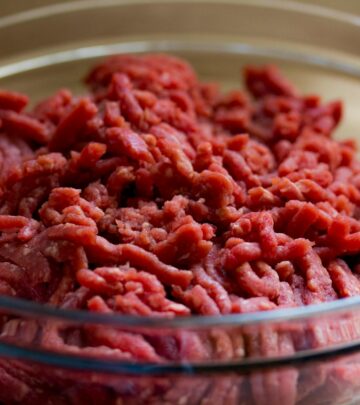
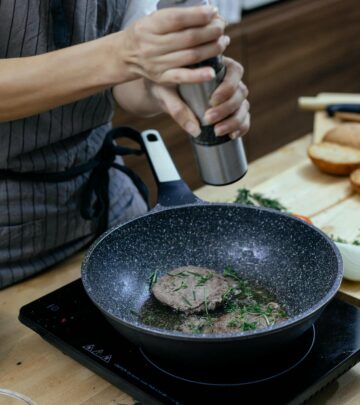
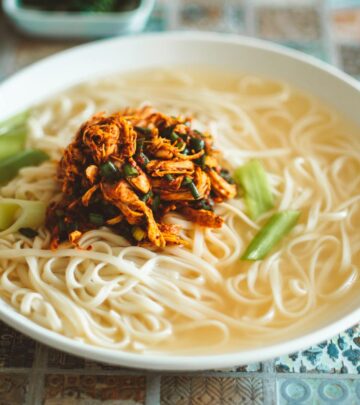
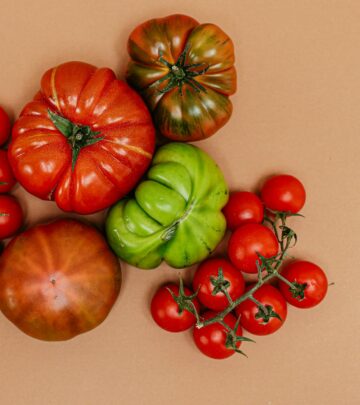
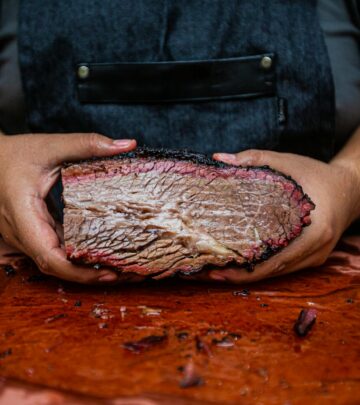


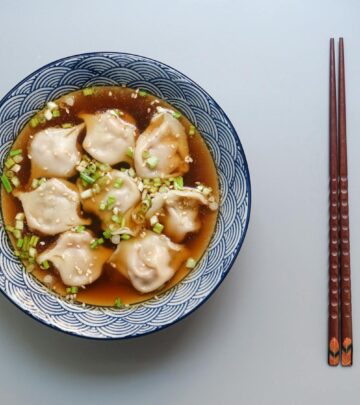






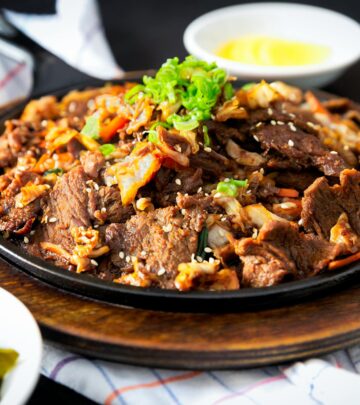

Community Experiences
Join the conversation and become a part of our empowering community! Share your stories, experiences, and insights to connect with other beauty, lifestyle, and health enthusiasts.